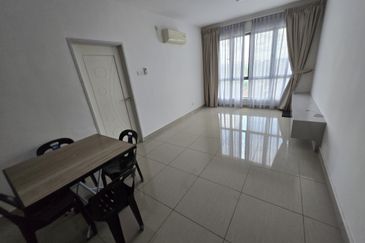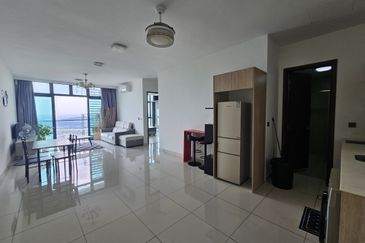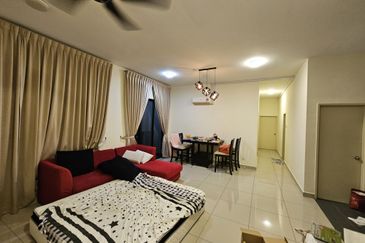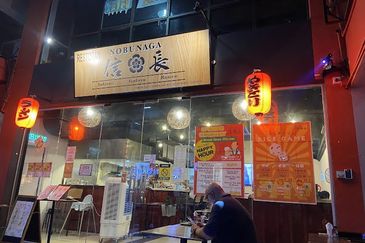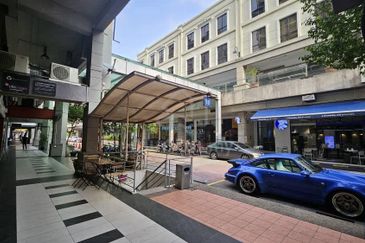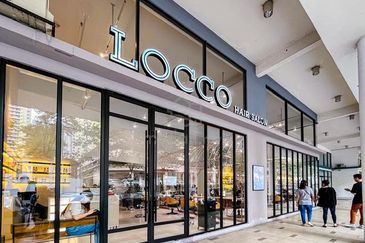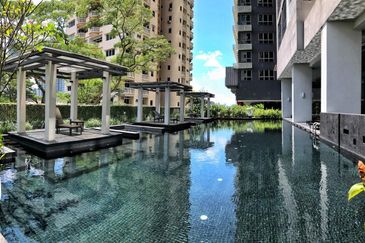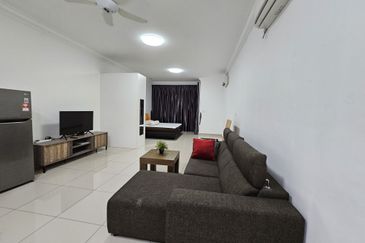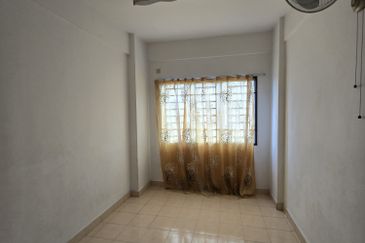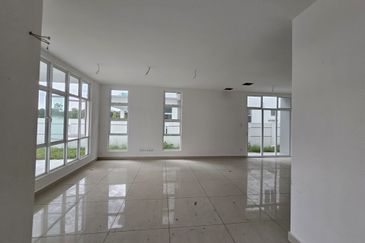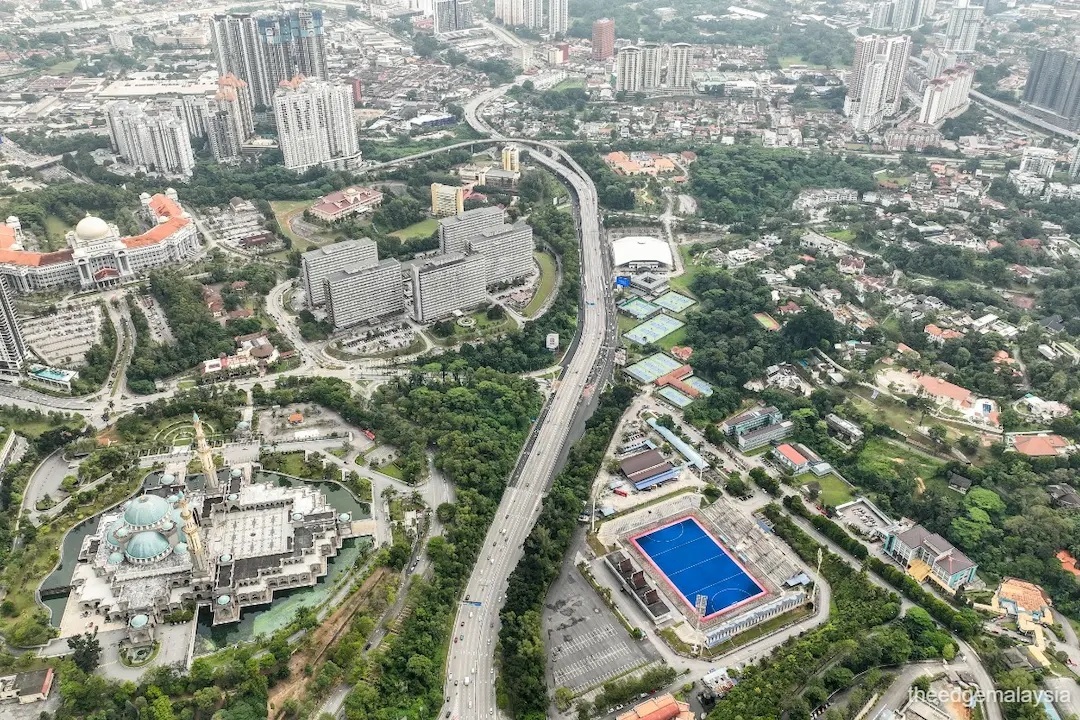
- Senior counsel Datuk Dr Cyrus Das, representing Semantan Estate, said that if the court were not able to enforce its own order, then there would arise great doubt on the upholding the rule of law on the government, the country, and its citizens.
PUTRAJAYA (Feb 20): The long-standing Semantan Estate (1952) Sdn Bhd dispute with the government could bring into question the issue of the rule of law in the country, as what the company and its liquidators possess is a judicial order by the High Court, and affirmed by the Federal Court, that leaves no doubt that the taking and occupation of the 263.272-acre prime Kuala Lumpur land known as the ‘Duta enclave’ is unlawful, but the matter had yet to be rectified, said the lawyers for the company.
Senior counsel Datuk Dr Cyrus Das, representing Semantan Estate, said that if the court were not able to enforce its own order, then there would arise great doubt on the upholding the rule of law on the government, the country, and its citizens.
“The government has made a series of obstacles and has exhausted the right to appeal in this matter,” he said, adding there had been every attempt (by the government through the years) to prevent the enforcement of the judicial order.
Cyrus said that in the long-standing dispute that spans from 1956 till today, it is the government’s responsibility to honour the court’s order and return the land to the company.
“Taking the land is deemed ultra vires (beyond the powers of the government) and the only way is to return the land. The government’s compliance with the court’s order is vital,” Cyrus emphasised.
Arguing against Section 29(1)(b) of the Government Proceedings Act, Cyrus said this is a pre-Merdeka law, and if the government is bringing up this issue — that the company is only entitled to compensation — the company is saying that it is unconstitutional, as such an act would violate Article 13(2) of the Federal Constitution.
Earlier, senior federal counsel Shamsul Bolhassan had argued that Semantan Estate is not entitled to the recovery of the land, but only to compensation.
Article 13(2) stipulates that no law can force the use or acquisition of property without adequate compensation.
In 2009, the High Court had ruled, in what is dubbed the Semantan III case, that “Semantan retained its beneficial interest in the 263.272 acres of the land held under CT 17038 Mukim of Batu, of which the government has, through its servants and/or agents, taken unlawful possession of, and that the plaintiff is entitled as against the defendant to possession thereof”.
The decision was affirmed by the Court of Appeal and Federal Court in 2012, and a review by the government in 2017 was also dismissed by the Federal Court.
Register land back to Semantan, ordered court last August
In August last year, Kuala Lumpur High Court judge Datuk Ahmad Shahrir Mohd Salleh had ordered the Federal Territory Land Registrar to register the transfer of ownership of the Duta enclave land, free of any encumbrances, from the government back to Semantan Estate within three months.
However, on Sept 12, Ahmad Shahrir granted a stay of the execution on his order, pending an appeal by the government.
Semantan Estate, on the other hand, is appealing against another High Court decision in 2021 by judge Datuk Ahmad Kamal Md Shahid (now a Court of Appeal judge), in not granting it a mandamus order to compel the government to revert possession of the land back to the company, despite the High Court, Court of Appeal, and Federal Court’s ruling that the government had trespassed on the land.
Cyrus added that in 1958, the Land Collector had already acknowledged that the government had taken possession of the land unlawfully in 1956, and the award of RM1.3 million as compensation was deemed to be invalid and deemed to have been received under protest.
However, Cyrus added that the government had chosen to ignore this over the years, and from the initial land acquisition, the government had split the land title into 38 sub-titles into the name of the Federal Territory Land Commissioner.
“What the government has done is unlawful in taking the land, and hence, as the company, we want our land back. It (the government) cannot say they cannot give back the land,” he added.
What can, or should, the government do?
Cyrus said that as Semantan Estate is deemed the beneficial owner of the land, what the government should do, as per the 2009 High Court decision and affirmed by the Federal Court, and since the government had also failed in its review in the apex court in 2017, is to transfer the title back to Semantan Estate.
“This is no practical difficulty, but administrative (on the title of the land),” he said.
Secondly, Cyrus added that the government must give possession of the land back to the company, and in this, the lawyer admitted to some difficulty, but pointed out that time is of the necessity.
The current problem, Cyrus said, is not the fault of the company, as the government chose to erect government buildings there (on the disputed land).
“The existence of public buildings and roads are all difficulties created by the respondent (the government), by its own hasty acts going back to 1958. The collector had admitted on May 3, 1958, that the acquisition of the land was illegal, but yet they (the government) proceeded [with establishing the buildings],” he said.
Cyrus further asked if it is alright for action be taken on a private individual who had taken land illegally, and yet, action cannot be taken on the government (for the same crime).
The land in question has several government buildings on it, namely the Inland Revenue Board’s headquarters, as well as the National Examinations Syndicate, Shariah Court Complex, the Federal Territory Mosque, the National Archives, and the Tun Razak Hockey Stadium.
Other structures are the National Tennis Complex, Integrity Institute of Malaysia (IIM), Malaysian Anti-Corruption Academy, Institute of Islamic Understanding Malaysia (IKIM), the Duta bus terminal, and pockets of land that have yet to be developed.
On the land is also the main road and overhead bypass from Jalan Duta (now known as Jalan Tuanku Abdul Halim) leading to Segambut.
Company wants land, compensation, and mesne profit
Cyrus, who appeared with Ira Biswas and Janet Chai Pei Ying, said following the decision in 2009, which was upheld by the Federal Court, their clients want a return of the land title, free of encumbrances, as decided by the High Court, and compensation from 1956 onwards, in addition to mesne profit.
He added that the court should consider the calculation of mesne profit from 1956 until the land is given back.
A mesne profit is a sum expected to be paid by someone or the government for wrongfully occupying property of the rightful owner.
Cyrus added that if the government wants to acquire the land back, then it should make a fresh application afterwards.
“This case raises fundamental issues with regards to property rights in Malaysia and whether the government can flout a judicial order to return private land unlawfully occupied by it. The courts should not hesitate to enforce [their] own orders, to ensure that the constitutional rule of law prevails,” he said.
The bench, led by Datuk Lee Swee Seng, along with Datuk Azimah Omar and Datuk Wan Ahmad Farid Wan Salleh, deferred delivering the decision to another date. The hearing follows no settlement having been reached, as of November last year, to the long-standing case.
Prior to the November 2024 hearing date, there were earlier discussions of settling the dispute from 2022 onwards, but to no avail. It was only after the High Court order in August last year, which allowed for the re-registration of the land to Semantan, that both the Semantan and government appeals were heard. Even so, the government again said it wanted to explore a settlement.
Semantan Estate was founded by the Eng Lian Group and Ng Chin Siu & Sons Rubber Estates Sdn Bhd — the vehicles of two prominent land-owning families.
Eng Lian Group is mostly known for developing Bangsar in Kuala Lumpur from the 1970s. The group’s commercial and retail showcase — Bangsar Village — sits prominently there. Ng Chin Siu & Sons Rubber Estates, meanwhile, has kept a low profile and has not done many developments in recent years. Most of Desa Sri Hartamas and Mont'Kiara once belonged to it.
EdgeProp.my is currently on the lookout for writers and contributors to join our team. Please feel free to send your CV to editor@edgeprop.my
Looking to buy a home? Sign up for EdgeProp START and get exclusive rewards and vouchers for ANY home purchase in Malaysia (primary or subsale)!
TOP PICKS BY EDGEPROP
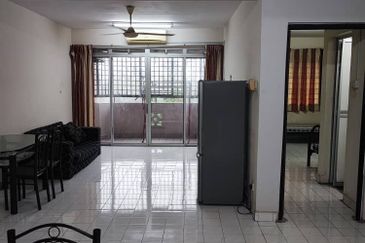
Apartment Tanjung Puteri Resort
Pasir Gudang, Johor
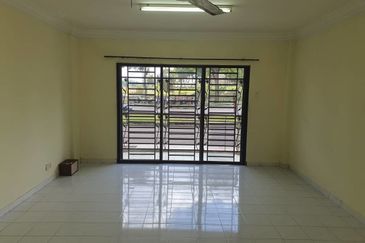
Seri Mutiara Apartment, Bandar Baru Seri Alam
Masai, Johor


